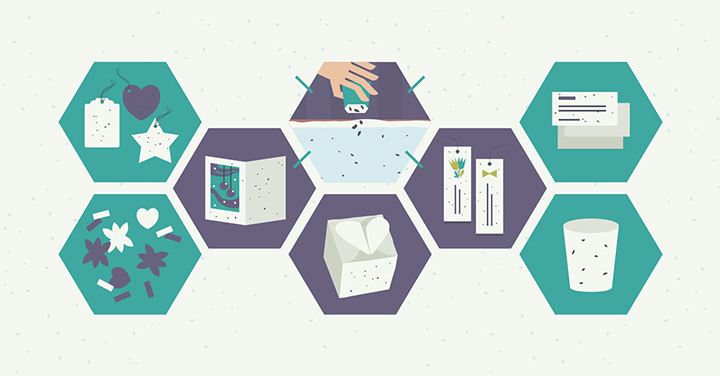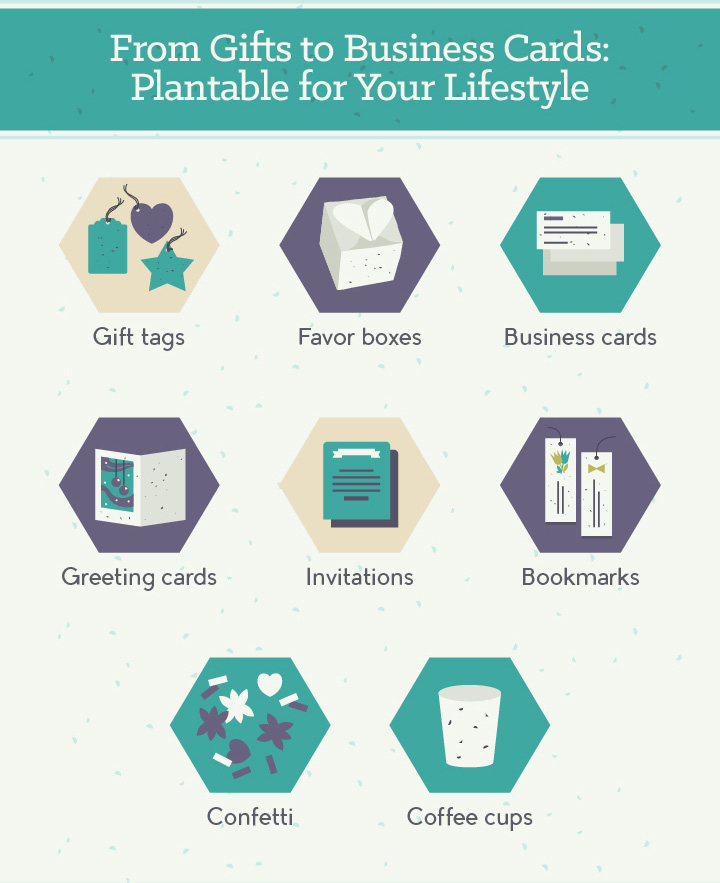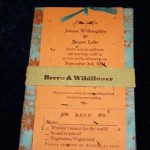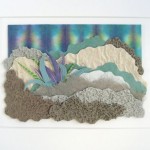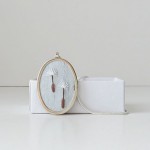There’s a new way to send loved ones flowers in the mail, and it’s a whole lot cheaper (and smaller) than a bouquet of long-stemmed roses. Seed-embedded, plantable paper products, which have been around for some time, have popped up all over the eco-friendly products market. Plantable goods, which run the gamut from coffee cups to wedding confetti, offer a great way to share the gift of vegetables, herbs, or flowers while reducing waste. Read on to learn why and how to sow creative, resourceful, eco-friendly paper-covered seeds.
The Benefits of Seed-Embedded Products
Plantable goods have both social and environmental value. Socially, seed-embedded products can beautify communities, contributing green space and happiness-inducing flowers (or healthy veggies) virtually anywhere there’s soil. They can also transform the way people think about trash: Plantable paper items are a creative way to reduce waste and repurpose used products.
Environmentally, plantable goods can contribute to reforestation, which improves soil and wetland health, water quality, and animal habitat. They can also encourage people to plant home gardens, which provide much-needed habitat for bees and other wildlife, and are better for the soil than perfectly manicured lawns. Seed paper is generally made from recycled materials and natural vegetable dyes. When put to its intended use, seed paper is biodegradable and zero-waste. When you consider that Americans generate approximately 250 million tons of trash and recycling each year, any product that keeps materials out of the waste stream is worth trying.
How Seed-Embedded Products Work
So how are these innovative products made? While production varies by brand, the general concept is simple:
- Grind paper (preferably recycled and/or post-consumer) to a pulp
- Strain
- Add vegetable, herb, or flower seeds
- Press everything together
- Dry paper
Once in the hands of consumers, the process for using plantable goods is also straightforward. Simply plant the paper in a pot, garden, or plot of dirt and cover with soil. The paper gradually biodegrades, while the seeds take root and produce flowers, herbs, or vegetables (depending on the kinds of seeds embedded in the paper). Here are more specific instructions:
- Gather your materials
You’ll need a pot or an outdoor plot for planting, potting soil, water, and your seed-embedded product(s). If it’s extremely cold or extremely hot, plant the paper in a planter indoors, then move it outdoors if and when the conditions are right. - Prepare for planting
If you use a pot or planter, fill it approximately two-thirds full with potting soil. - Plant your paper
Press the plantable paper into the soil and cover it with approximately 1/8 to 1/4 inch of soil. Gently press the soil on top of the paper. - Water regularly
Once you’ve planted the paper, water it well so the soil is damp but not over-saturated. If puddles form, you’ve overdone it. For the first 10 days after planting, be sure to keep the soil moist at all times. - Provide ongoing care
Once sprouts appear, keep the paper moist but not over-watered. When sturdy plants start to grow, you won’t need to water as frequently. Just be sure that the soil doesn’t dry out entirely.
How to Incorporate Plantable Goods Into Your Lifestyle
There are many fun, creative, stylish ways to incorporate eco-friendly plantable goods into your life. Sow the seeds of your imagination (and your plantable paper) beyond these examples.
- Party favors
Wine tags, gift tags, patches, and plantable favor boxes are all great ways to green a party or wedding reception. - Business cards
Stand out from the corporate pack with unique and environmentally-friendly business cards. - Stationery and cards
Don’t just send a card: Send a card that keeps on giving in the form of vegetables, herbs, or flowers. - Invitations
Your future guests will be excited to attend your event and remember it every time they see the beautiful plants grown from your invitation. - Bookmarks
Reading just got a whole lot greener. If your plantable bookmark starts to get tattered, then it’s time to give it new life: Plant it and watch it grow. - Wedding gifts
Blooming boxes make for an eco-friendly and symbolic gift: Couples can plant the box together and watch flowers grow along with their love for each other. - Wedding confetti
Shower the happy couple with confetti that can grow after the celebration. - Guerilla gardening
Though it’s a bit unconventional, consider spreading the gift of veggies, flowers, or herbs in your community by planting seed-embedded products anywhere you come across neglected soil. Places like abandoned lots and concrete planters (such as those you see alongside sidewalks) are great options. Just plant some seed-embedded paper and watch as spaces transform into gardens. - Greener coffee
Reusable, plantable coffee cups are the to-go mugs of the future. Just one cup grows at least one tree, which will extract 1 ton of carbon dioxide over a 40-year time period. - Plant them
The best way to put seed-embedded products to use is for their intended purpose. Regardless of whether you make or purchase your own or receive plantable goods as a gift, be sure to plant them to reduce waste and grow food or pretty flowers).
Conclusion
No matter how you put them to use, seed-embedded paper products are a great way to cut down on waste and promote healthy, vibrant ecosystems wherever you live. So what are you waiting for? Go plant some paper!
Note: Whenever you purchase or make seed-embedded products, select native and non-invasive seeds. Native plants are adapted to the geography, hydrology, and climate of a particular region and the local ecosystems are equally adapted to them. They offer hardy, low-maintenance landscaping and won’t harm the local environment. Invasive or non-native species, on the other hand, can disrupt the health of regional ecosystems.
If this article has you interested in learning more about plantable paper, check out these wrought iron plant stands. — http://www.custommade.com/gallery/custom-plant-stands/
